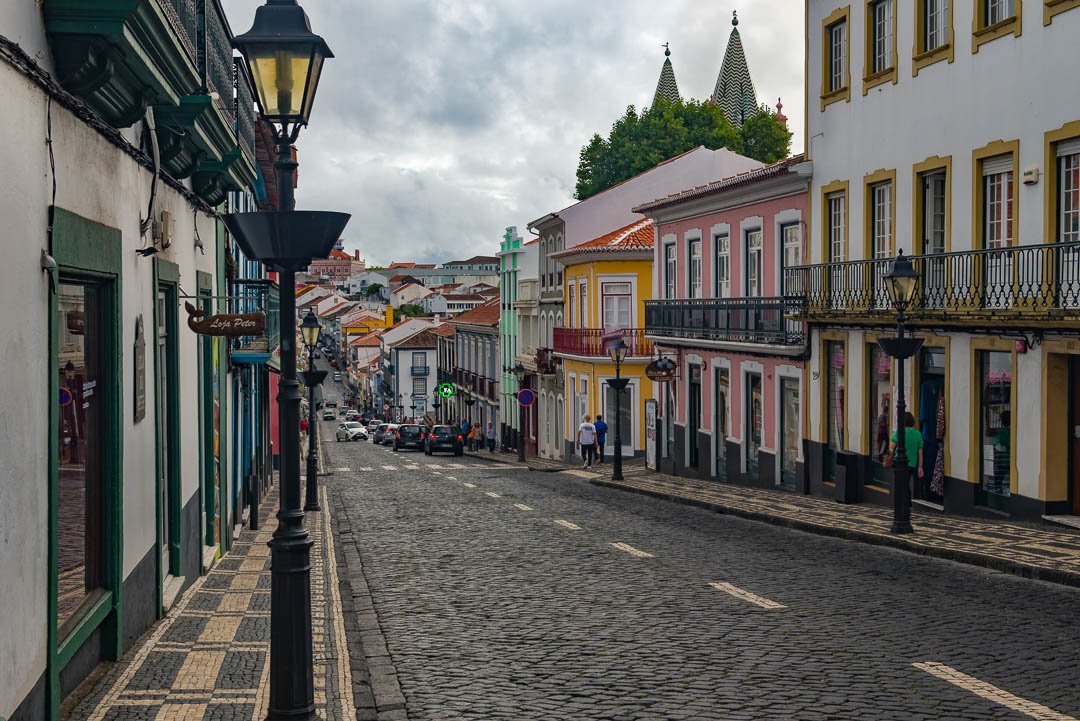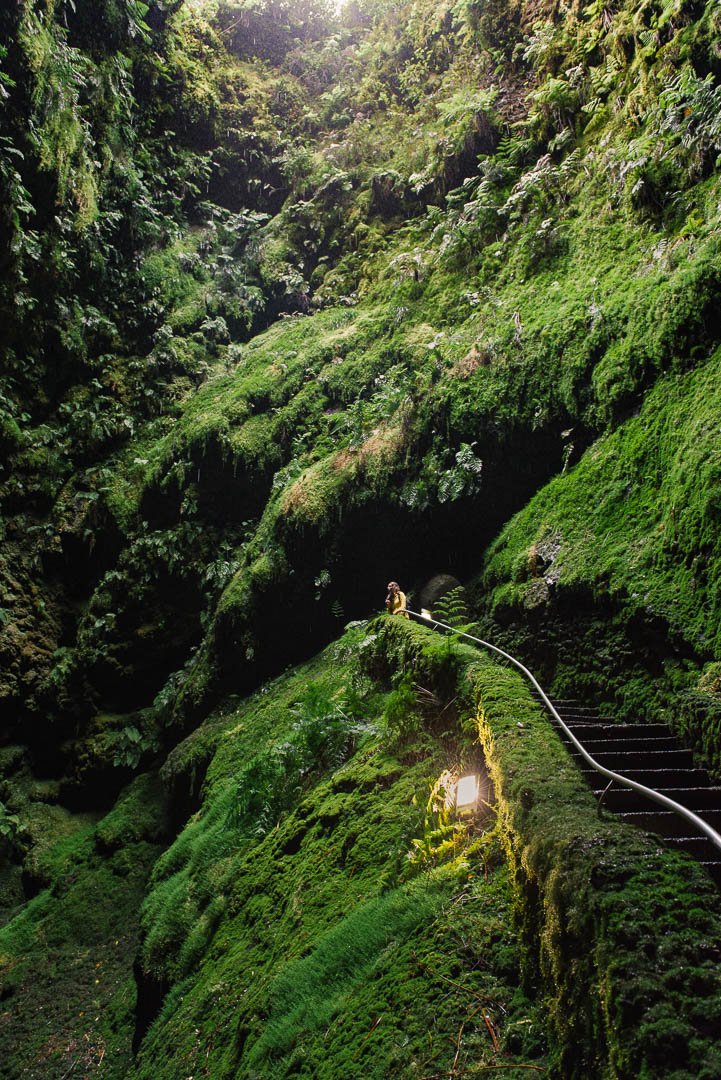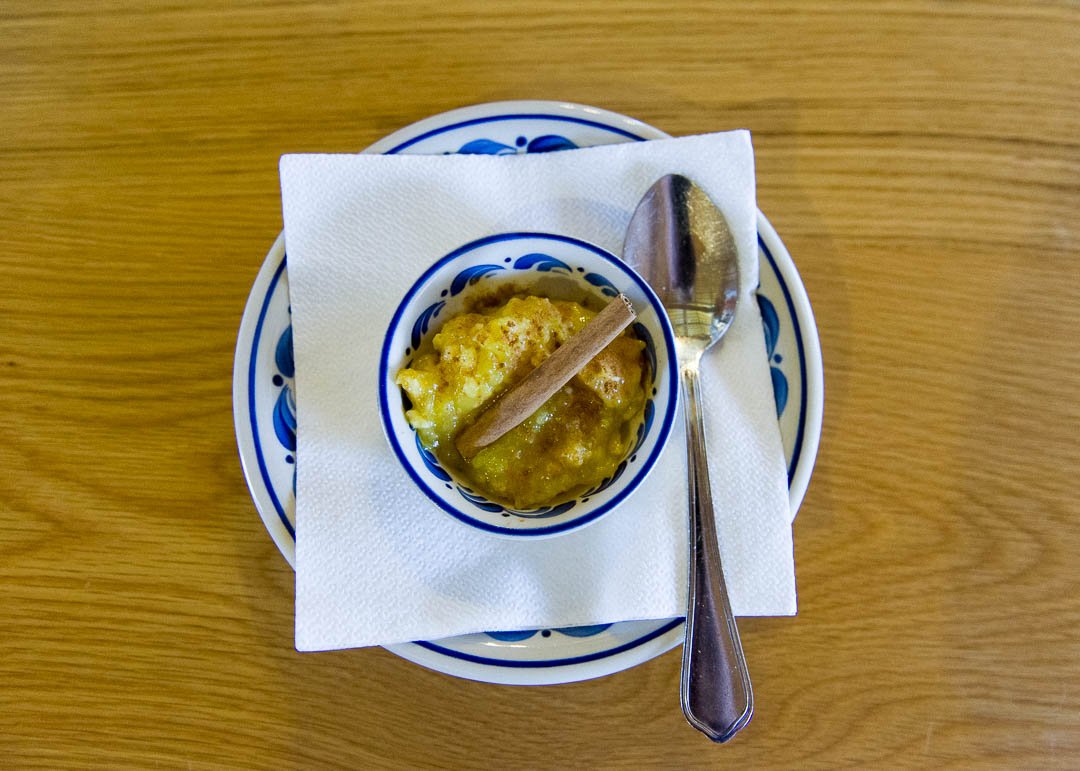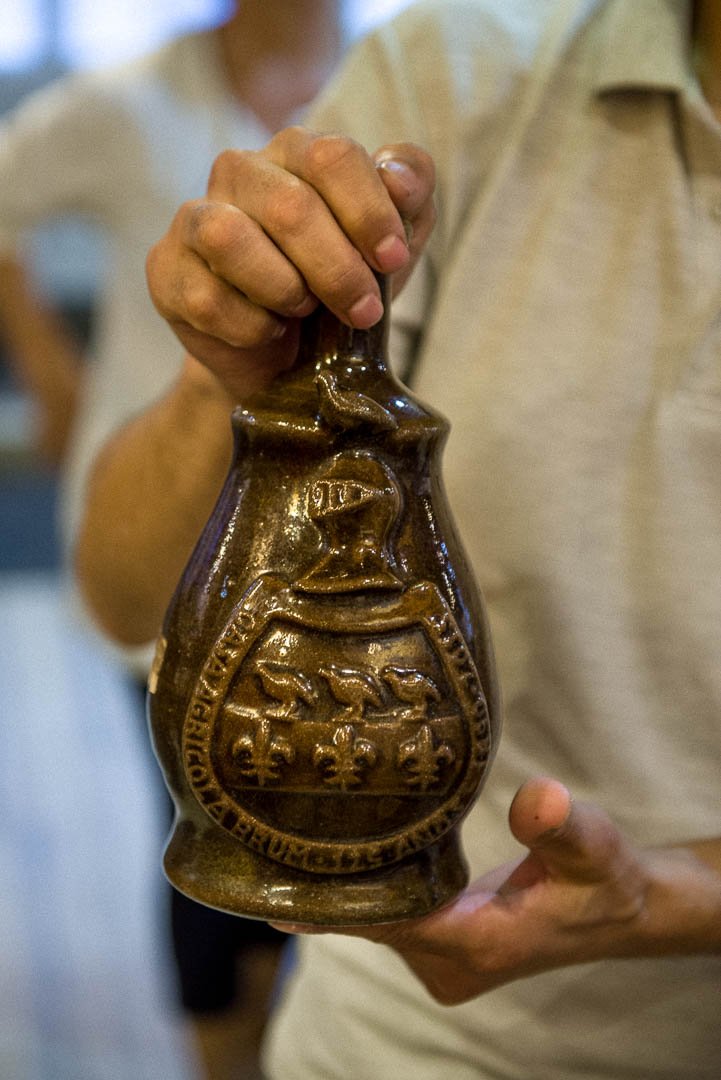Azores, Terceira (2 of 4)
Terceira interests me largely because of Angra do Heroismo. Angra, as the locals call it, is a UNESCO World Heritage City, as it was a key hub for global sailing vessels in the Age of Exploration, prospering and growing into a beautiful white stone port city of steep streets running down the harbor, flanked by two high above forts. Paved with mosaic cobbles of black and white lava rock, the steep narrow streets draw you through a city with a lovely cathedral, churches, municipal buildings, and gardens, down to harbor full of multicolored fish. It is thrilling to drive into the city in the predawn darkness, it feels like time travel my car rattling over the century old cobbles, the mostly darkened city still asleep around me. Driving in Angra is not for the faint of heart, the tight, one-way, steep streets are confusing and made me grateful for my Boston upbringing. A car or scooter is essential for exploring all the islands, as public transport is limited or nonexistent.
I stay in the middle of the city at the simple, reasonably priced Globo Happy Hostel, Angra do Heroismo, Terceira where I am greeted on my rooftop patio by the chiming of the church bells ringing out across the terracotta rooves of Angra. Alternatively, you can stay in one of the forts above the city, at the Pousada Forte Angra do Heroismo, which looks stellar and has a fort top swimming pool.
Angra
Snorkeling at the base of the triangular spires of the two islands, Ilhéus das Cabras (the remaining top of an underwater volcano) is an amazing way to start the trip. I find snorkel, dive, and whale watch companies down by the piers, all for very reasonable prices. The boat captain waits as I dash back up to my room to ditch my camera and grab my suit, although I am a bit tired from minimal sleep on the 5-hour flight over, after seeing the brilliant fish in the harbor, all I want to do is get in the water. Our first snorkel spot was inside an aquamarine blue cave, but we found it full of Portuguese Man of War. Thankfully exiting for a safer spot, I realized swimming in such vibrant waters would require some vigilance. (As a note on water tours, be wary of anyone who is unethically selling whale encounters, guaranteeing engagement, as there are science driven government rules to keep whales safe but not all operators follow them. Do your research around whale tours.) Three snorkel spots later I am thrilled by the fish life we have seen, the caves we have traveled through, and no longer scoffing at the one millimeter wet suit the dive team insisted on but instead wishing for a bit more.
But not put off at all, over the next few days, I visit the natural swimming pools across the island, and in spite the intermittent gray weather jump in the water whenever locals do. Swimming in the Azores is a year-round endeavor. In Sao Miguel, I see people swimming in the harbor when it is 50’F, blowing rain sideways and the rest of us are wearing sweaters, pants, and parkas.
Algar do Cavao
Algar do Carvao is one of the many caves I tour in the Azores, and one of the most extraordinary I have ever seen. Although there was a line (and the hours were limited because of off season) you can buy a ticket for Algar do Carvao and Furnas do Enoxfre together. Algar Gruta do Natal, another type of cave, a 700-meter lava tube is also located nearby but I skipped this as I was badly underdressed for a third chilly, damp, underground expedition, having started the day in hot sun, and before the weather turned. I learned to pack the car for all weather after that. Algar do Carvao is a scoria cone, which is to say it is a deep cavern you descend into, first dug through the ground and then emerging in and descending further within the cavern itself. The cavern has an opening at the top to the sky and the steep cavern walls are covered, fantastically, with lush green vegetation, deep in the ground. Further down the cavern are stalactites and a pool. But emerging into the cavern to look up and see the sky far above with surrounded by the green plants, many endemic, felt surreal, Jurassic. A feeling that would be repeated throughout the Azores.
Algar do Cavao
On the far side of the island, I have a phenomenal, dry aged steak and sweet rice dessert at the family owned Caneta Restaurant. Although he has no English and I, no Portuguese, seeing my enthusiasm, the owner, Manuel Dias, and his son Carlos, invite me down the quiet street after to see their herd of prize-winning Angus cattle. There is a day old calf whose mother has rejected him who I greet, his eyes luminous. Back at the restaurant, with a neighbor returned from Canada with his wife translating, we are all shown the state-of-the-art spaces where the restaurant cures the meat. We drink limited edition Brum licorice liquor from the Wine Museum down the road, admiring the handmade clay jars. The molds, made by a local artist, were smashed after the liquor was made. As I was leaving, Carlos gifted me a jar of his Azor Ghee, his tasty addition to the family business.
Caneta Restaurant (all)
Back in Angra, I explore the winding streets and cafes. High above the harbor walls, the Bordados dos Acores, is an artisan coop, of sorts, and is the best embroidery and craft shop I found in the Azores for locally made crafts, like nativity sets painstakingly created within tiny shells, table cloths and other totally unique gifts made on island.
I did not make it here, but this hotel also looks interesting; Caparica Azores Ecolodge.
Cathedral of Angra do Heroismo
Natural Swimming pools on a stormy day













